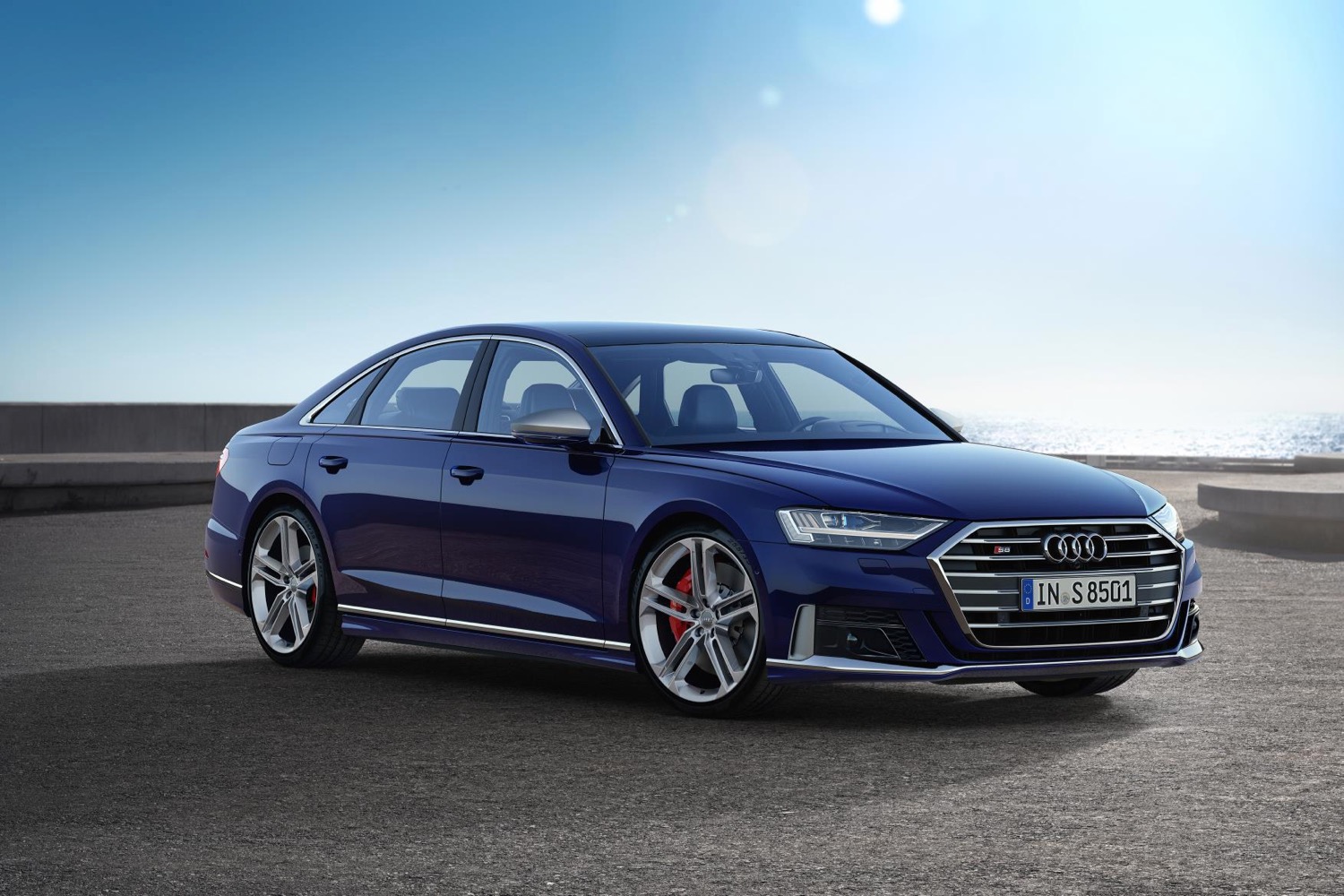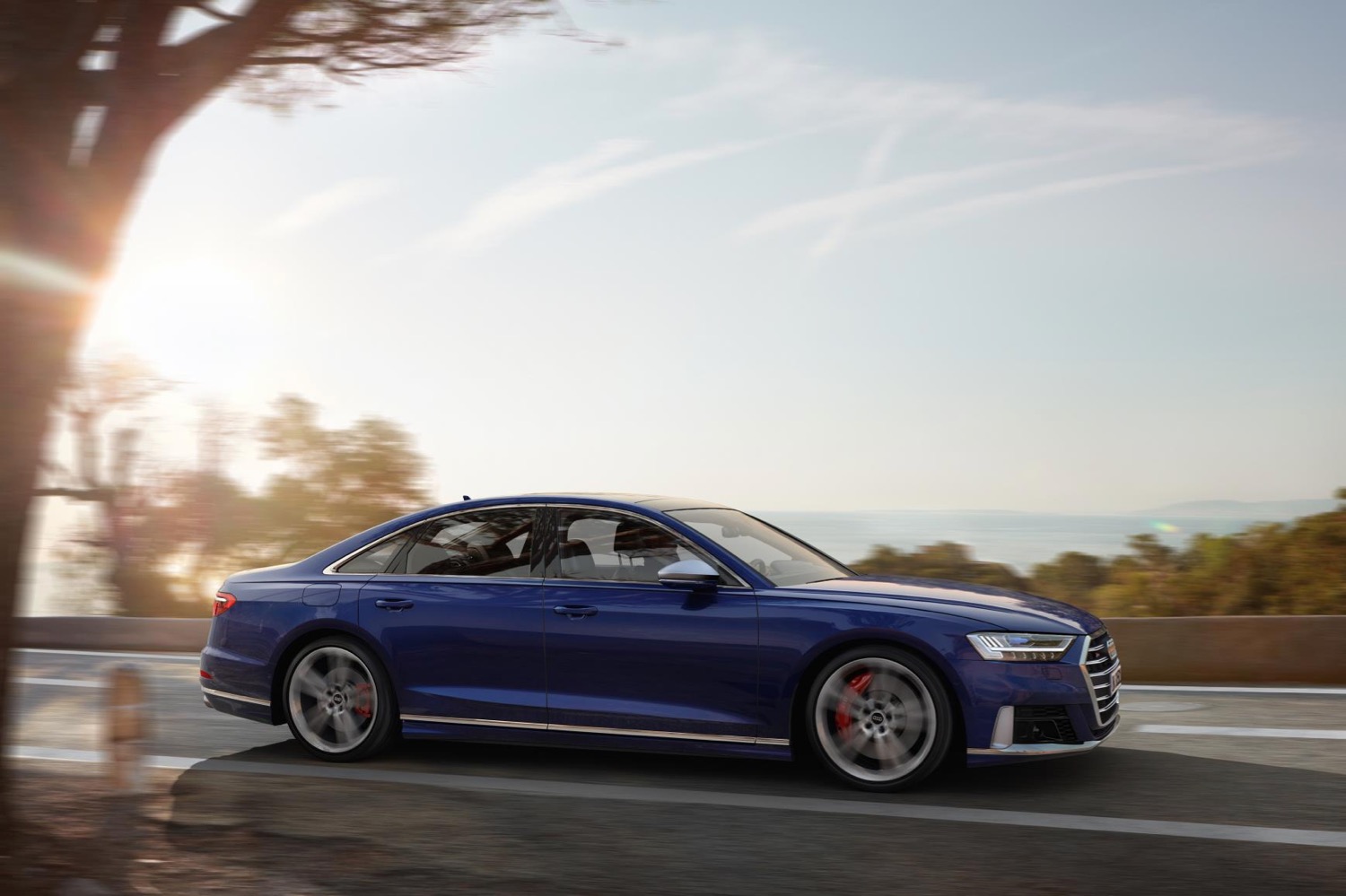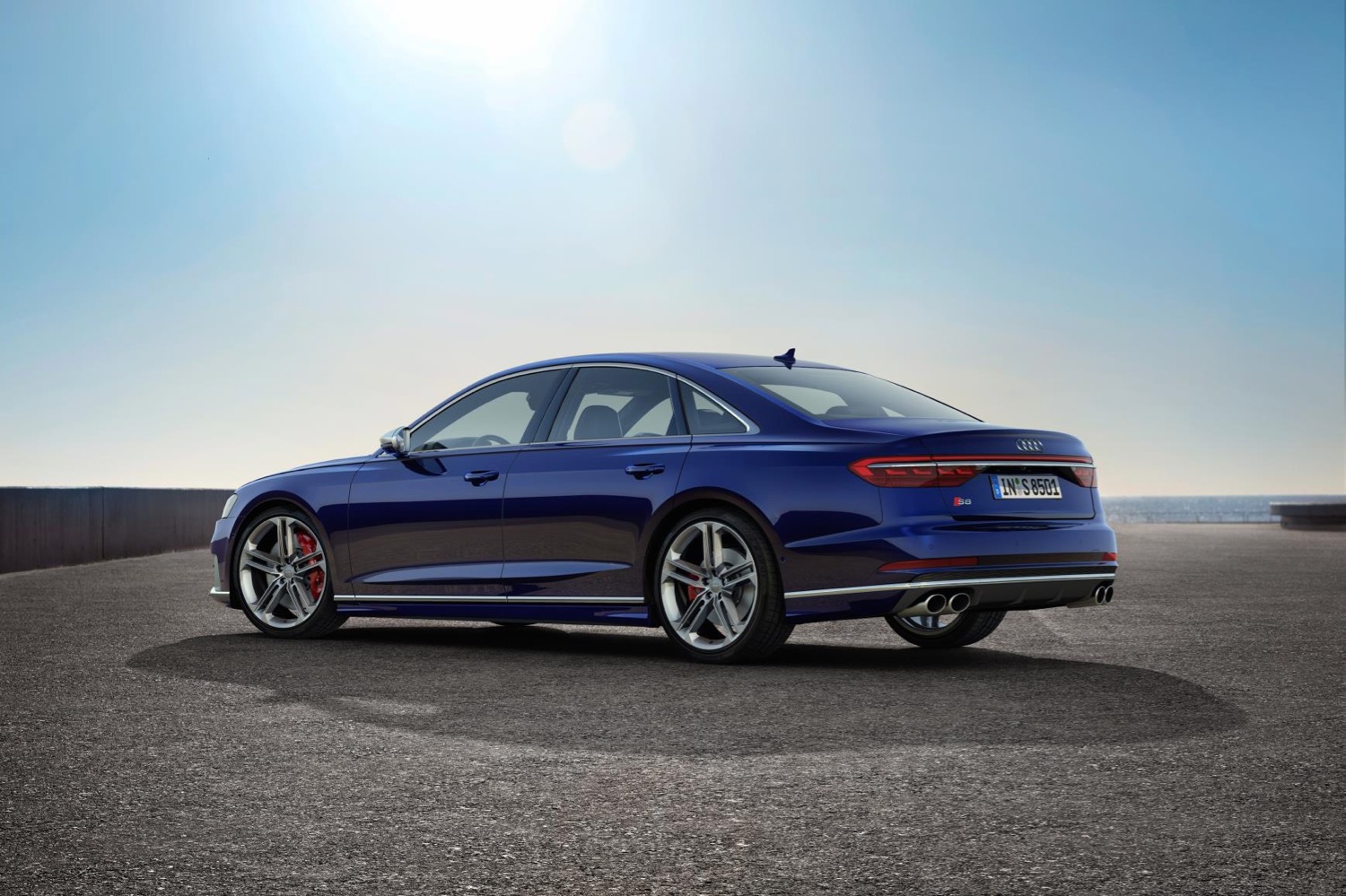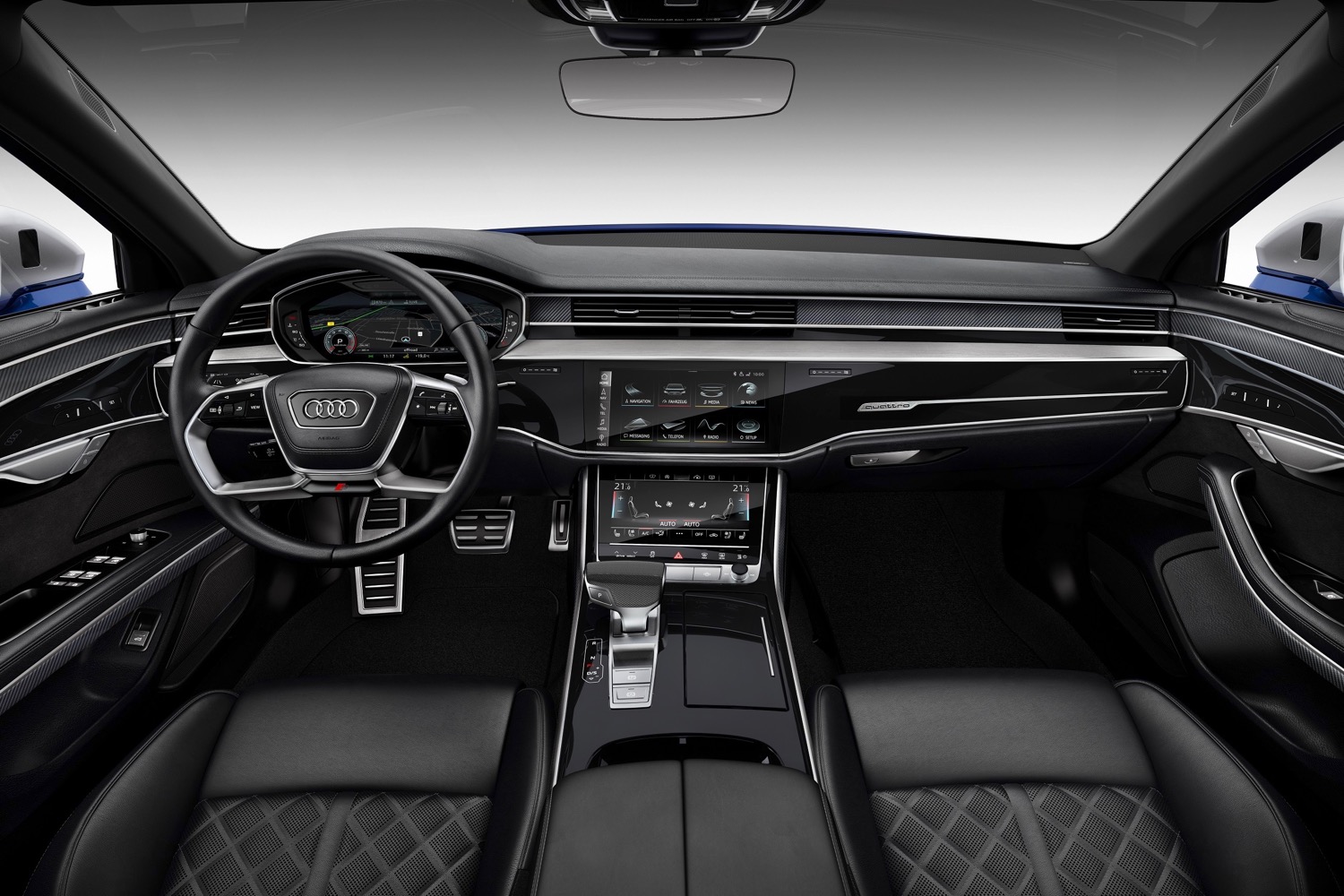The current-generation Audi A8 has an impressive array of tech features, but one thing missing at the big luxury sedan’s launch was a new S8 performance model. Following an unveiling in Europe, the 2020 Audi S8 will make its North American debut at the 2019 Los Angeles Auto Show, and should hit showrooms on this side of the pond next year. Audi is also bringing an A8 plug-in hybrid to the United States for the first time.
The new S8 uses the same 4.0-liter, twin-turbocharged V8 as its predecessor, but this time the burly engine is paired with a mild-hybrid system. Similar to the systems used in other recent Audi models, it allows for a more aggressive engine start-stop system, and even lets the S8 coast with the engine off under certain conditions. With the engine on, the S8 boasts 563 horsepower and 590 pound-feet of torque. Audi claims the S8 will do zero to 60 mph in 3.8 seconds, with a top speed electronically limited to 155 mph.
Making a big sedan like the S8 truly sporty isn’t easy, but Audi had lots of tech in its toolbox to help do the job. The S8 gets standard all-wheel drive with a rear differential that can actively shunt power side to side between the back wheels, which should improve cornering. The standard air suspension gets a predictive feature that scans the road ahead with cameras, and automatically adjusts settings in anticipation of bumps or potholes. All-wheel steering turns the rear wheels in the opposite direction of the front wheels at low speeds to improve maneuverability, and turns all four wheels in the same direction at higher speeds for added stability.
Like other Audi S models, the S8 doesn’t telegraph its performance capabilities. Visually, the S8 is distinguished from the standard A8 by subtle styling changes like extra chrome, a new front fascia with more vents, and quad exhaust tips. On the inside, the S8 gets model-specific front seats with active bolsters that automatically close to keep occupants in place during hard cornering, as well as “3D-effect” carbon trim. The S8 gets the same dual-screen MMI infotainment system as the A8. In Europe, the S8 also gets Audi’s laser light system and traffic-jam assist driver aid, but those features are not available in the U.S.
In addition to the S8, Audi is launching an A8 plug-in hybrid for the 2020 model year. Dubbed A8 60 TFSI e, it’s powered by a 3.0-liter turbocharged V6, and an electric motor integrated with the torque converter of an eight-speed automatic transmission. Total system output is 443 hp and 516 lb-ft of torque, allowing the plug-in hybrid to do zero to 60 mph in 4.9 seconds, according to Audi. Electricity is stored in a 14.1-kilowatt-hour battery pack, but Audi did not provide an estimate for electric-only driving range.
Audi is also bringing back the V8 engine in the base A8 for 2020. It’s essentially a detuned version of the 4.0-liter twin-turbo S8 motor, making 453 hp and 487 lb-ft of torque. A 3.0-liter turbocharged V6, with 335 hp and 369 lb-ft, carries over as the base engine.
Pricing for the 2020 Audi A8 starts at $86,195 for a base 55 TFSI model with the V6, while the V8-powered A8 60 TFSI starts at $97,795. The 2020 Audi S8 starts at $130,495, but pricing for the plug-in hybrid model hasn’t been announced yet.
Updated on November 15, 2019: Added pricing and updates to the rest of the 2020 A8 lineup.







